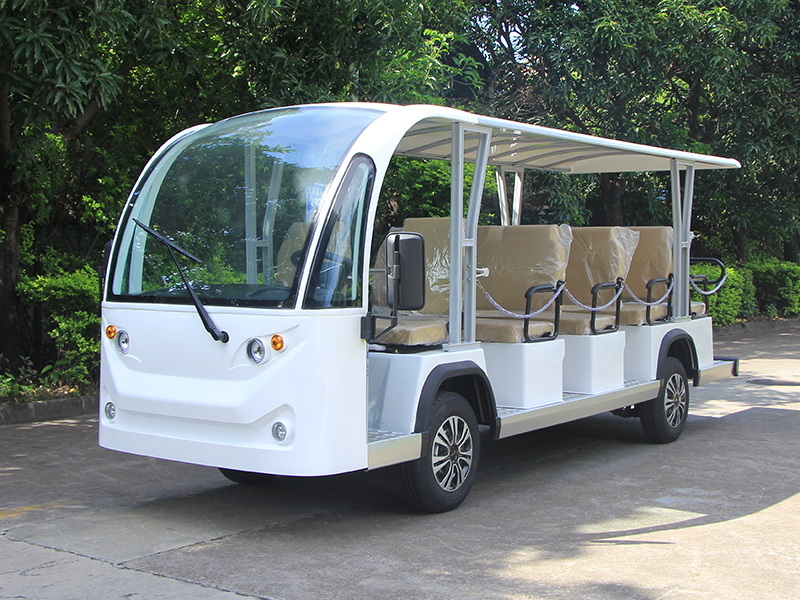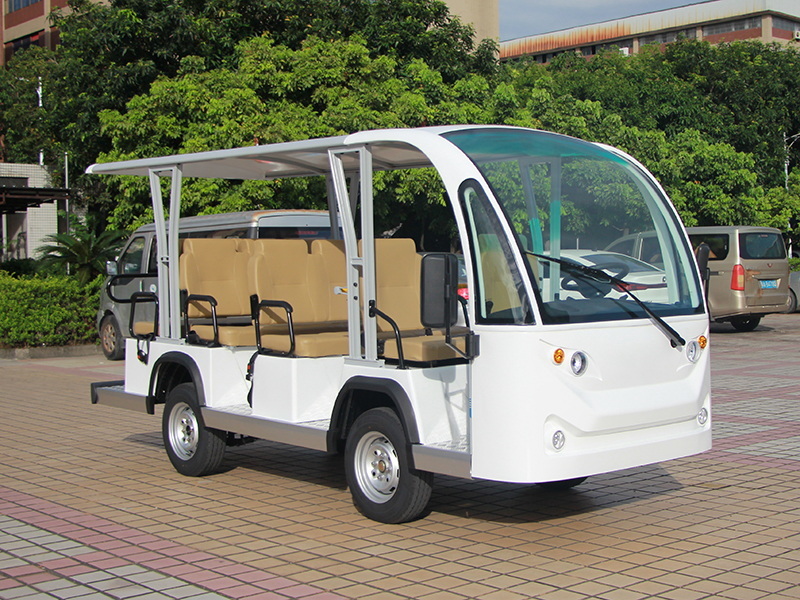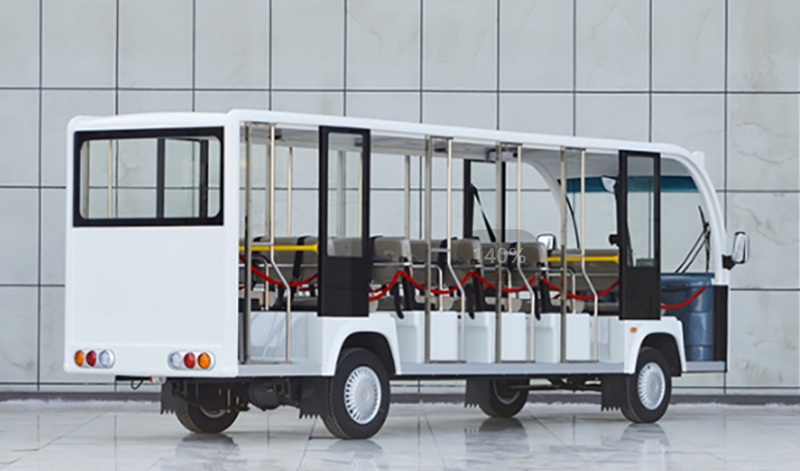Content Menu
● Understanding Electric Tourist Buses
● Can Electric Tourist Bus Suppliers Offer Custom Designs?
>> Yes, Custom Designs Are Available
>> Types of Customizations Offered
>>> Seating Capacity and Layout
>>> Exterior Design and Branding
>>> Interior Features and Amenities
>>> Bus Body Structure and Design
>>> Powertrain and Battery Options
>>> Safety and Compliance Features
● Why Choose Custom Electric Tourist Buses?
>> Brand Differentiation and Marketing
>> Enhanced Passenger Experience
>> Operational Efficiency and Cost Savings
>> Environmental Benefits
>> Compliance and Safety Assurance
● The Customization Process with Electric Tourist Bus Suppliers
● Trends in Electric Tourist Bus Customization
>> Integration of Smart Technologies
>> Sustainable Materials and Green Interiors
>> Modular Designs for Flexibility
>> Enhanced Accessibility Features
● Conclusion
● FAQ
>> 1. What customization options do electric tourist bus suppliers typically offer?
>> 2. How long does it take to get a customized electric tourist bus?
>> 3. Are custom electric tourist buses more expensive than standard models?
>> 4. Can suppliers customize electric buses for different climates and terrains?
>> 5. How do electric tourist buses compare environmentally to traditional diesel buses?
Electric tourist buses are rapidly gaining popularity worldwide due to their eco-friendliness, quiet operation, and cost efficiency. As tourism companies seek to enhance their service quality and brand identity, the demand for customized electric tourist buses is rising. This article explores whether electric tourist bus suppliers can offer custom designs, the types of customizations available, and the benefits of opting for tailored electric buses.

Understanding Electric Tourist Buses
Electric tourist buses are vehicles powered entirely or partially by electricity, designed primarily for sightseeing and transporting tourists in urban or scenic areas. They come in various forms, including battery electric buses, hydrogen fuel cell buses, plug-in hybrids, and extended-range electric buses. These buses are favored for their low emissions, reduced noise pollution, and operational cost savings.
The shift towards electric tourist buses is driven by increasing environmental regulations, rising fuel costs, and growing public awareness about sustainability. Many cities and tourist destinations are encouraging or mandating the use of zero-emission vehicles in sensitive or congested areas, making electric tourist buses an ideal solution.
Can Electric Tourist Bus Suppliers Offer Custom Designs?
Yes, Custom Designs Are Available
Most electric tourist bus suppliers provide custom design services to meet the specific needs of their clients. Customization can range from aesthetic changes to functional modifications that enhance passenger comfort, safety, and operational efficiency. Suppliers understand that tourism operators have unique requirements based on their target markets, route characteristics, and branding strategies.
Types of Customizations Offered
Seating Capacity and Layout
One of the most common customizations is adjusting the seating capacity and layout. Electric tourist bus suppliers can design buses with anywhere from 8 to over 50 seats, depending on the size of the vehicle and the intended use. The seating arrangement can be configured for maximum capacity, luxury comfort, or accessibility. For example, some buses feature wheelchair-accessible areas with ramps or lifts to accommodate passengers with disabilities.
Exterior Design and Branding
The exterior of the bus is a prime opportunity for branding and marketing. Suppliers offer custom paint jobs, vinyl wraps, and decals that reflect the company's logo, color scheme, or thematic elements. This customization helps operators create a memorable visual identity that tourists can easily recognize. Some suppliers also provide options for LED display panels on the bus exterior to show dynamic advertisements or route information.
Interior Features and Amenities
Interior customization is critical for passenger satisfaction. Electric tourist bus suppliers can install luxury seating with ergonomic designs, adjustable headrests, and extra legroom. Climate control systems, such as advanced air conditioning and heating, ensure comfort in diverse weather conditions. Entertainment systems, including high-definition screens, Wi-Fi, and audio guides, can be integrated to enhance the sightseeing experience. Additionally, suppliers can provide ample luggage storage compartments or underfloor storage to accommodate tourists' baggage.
Bus Body Structure and Design
The body structure of the bus can be customized to suit operational needs. For example, low-floor designs facilitate easy boarding and disembarking, especially for elderly or disabled passengers. Double-decker electric tourist buses offer panoramic views from the upper deck, which is popular in city tours. Some suppliers also design enclosed buses with panoramic windows for all-weather touring, protecting passengers from rain, wind, or extreme sun.
Powertrain and Battery Options
Electric tourist bus suppliers can tailor the powertrain to meet specific route demands. Options include pure battery electric systems with various battery capacities to support different ranges, hydrogen fuel cell systems for longer distances and quick refueling, or hybrid systems that combine electric motors with internal combustion engines. Customizing the powertrain allows operators to optimize energy efficiency and operational costs based on their route length, terrain, and charging infrastructure availability.
Safety and Compliance Features
Safety is paramount in passenger transport. Suppliers can integrate advanced safety features such as collision avoidance systems, emergency braking, fire suppression systems, and CCTV surveillance. Custom designs also ensure compliance with local regulations, including emergency exits, lighting, and signage. Some suppliers offer customization for specific regional standards or certifications, making the buses suitable for international markets.
Why Choose Custom Electric Tourist Buses?
Brand Differentiation and Marketing
Custom electric tourist buses serve as moving billboards for tourism companies. A uniquely designed bus with eye-catching colors and logos attracts more attention and can become a symbol of the company's quality and commitment to sustainability. This differentiation helps operators stand out in competitive markets and build customer loyalty.
Enhanced Passenger Experience
Tailored interiors and amenities significantly improve passenger comfort and satisfaction. Features like plush seating, climate control, and onboard entertainment create a memorable travel experience that encourages repeat business and positive reviews. Accessibility features also broaden the customer base by accommodating passengers with special needs.
Operational Efficiency and Cost Savings
Customizing the bus size, powertrain, and battery capacity allows operators to optimize energy consumption and reduce maintenance costs. For example, a bus designed specifically for short urban routes may have a smaller battery and lighter body to maximize efficiency, while a bus intended for longer scenic routes may have larger batteries and more robust systems. These optimizations contribute to lower total cost of ownership.
Environmental Benefits
Electric tourist buses inherently reduce carbon emissions and noise pollution. Custom designs can further enhance environmental performance by integrating regenerative braking systems, solar panels on the roof for auxiliary power, or energy-efficient lighting and HVAC systems. This helps tourism companies meet sustainability goals and appeal to eco-conscious travelers.
Compliance and Safety Assurance
Customized buses ensure that all local safety and regulatory requirements are met or exceeded. This reduces the risk of fines, legal issues, or operational interruptions. Suppliers' expertise in designing compliant vehicles also streamlines the approval and registration process.

The Customization Process with Electric Tourist Bus Suppliers
Working with electric tourist bus suppliers to create a custom design typically involves several stages:
1. Consultation and Needs Assessment: The supplier meets with the client to understand their operational requirements, passenger demographics, route characteristics, and branding goals.
2. Preliminary Design Proposal: Based on the consultation, the supplier develops initial design concepts, including sketches, 3D models, and specifications for seating, powertrain, and features.
3. Client Feedback and Revisions: The client reviews the proposals and provides feedback. Adjustments are made to ensure the design meets all expectations.
4. Engineering and Prototype Development: The supplier engineers the bus structure and systems, often building a prototype or mock-up for testing and demonstration.
5. Manufacturing and Assembly: Once approved, the bus is manufactured, assembled, and outfitted with all custom features.
6. Testing and Quality Assurance: The finished bus undergoes rigorous testing for safety, performance, and compliance.
7. Delivery and Training: The supplier delivers the bus and may provide training for operators and maintenance personnel.
8. After-Sales Support: Many suppliers offer ongoing maintenance, software updates, and warranty services to ensure optimal operation.
Trends in Electric Tourist Bus Customization
Integration of Smart Technologies
Modern electric tourist buses are increasingly equipped with smart technologies such as GPS tracking, real-time passenger information systems, and remote diagnostics. Suppliers can customize these systems to provide operators with valuable data for route optimization, maintenance scheduling, and passenger engagement.
Sustainable Materials and Green Interiors
Some suppliers offer eco-friendly interior materials such as recycled fabrics, low-VOC (volatile organic compounds) paints, and sustainably sourced wood finishes. These options align with the overall environmental mission of electric buses and appeal to environmentally conscious customers.
Modular Designs for Flexibility
Modular bus designs allow operators to reconfigure seating and interior layouts quickly to suit different tour types or passenger volumes. This flexibility is particularly valuable for seasonal tourism businesses with varying demand.
Enhanced Accessibility Features
Suppliers are focusing more on accessibility by offering features like wider doors, kneeling bus functions, tactile indicators, and audio-visual announcements to assist passengers with disabilities.
Conclusion
Electric tourist bus suppliers are well-equipped to offer a wide range of custom designs that cater to the diverse needs of tourism operators. From seating arrangements and exterior branding to powertrain choices and safety features, customization enhances both the functional and aesthetic appeal of electric tourist buses. This flexibility not only helps companies improve their service quality but also supports sustainable tourism by promoting greener transportation options. As the demand for electric tourist buses grows, suppliers continue to innovate and expand their customization capabilities, making tailored electric buses an excellent investment for forward-thinking tourism businesses.

FAQ
1. What customization options do electric tourist bus suppliers typically offer?
Electric tourist bus suppliers offer custom seating layouts, exterior designs, branding, interior amenities like air conditioning and entertainment, powertrain configurations, and safety features tailored to client needs.
2. How long does it take to get a customized electric tourist bus?
The customization timeline varies depending on the complexity of the design and supplier capacity but typically ranges from a few weeks to several months, including design approval, manufacturing, and testing.
3. Are custom electric tourist buses more expensive than standard models?
Custom buses generally cost more due to additional design work and specialized components. However, the investment can lead to better operational efficiency and brand value, offsetting the initial cost over time.
4. Can suppliers customize electric buses for different climates and terrains?
Yes, suppliers can adapt bus features such as insulation, heating, cooling systems, and suspension to suit various climates and terrains, ensuring reliable performance and passenger comfort.
5. How do electric tourist buses compare environmentally to traditional diesel buses?
Electric tourist buses produce zero tailpipe emissions, reduce noise pollution, and can be powered by renewable energy sources, making them significantly more environmentally friendly than diesel buses.










































